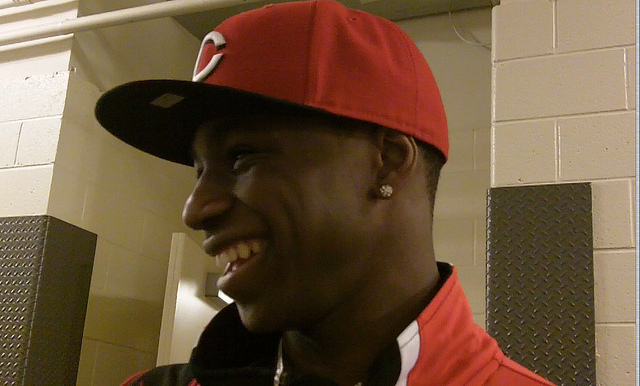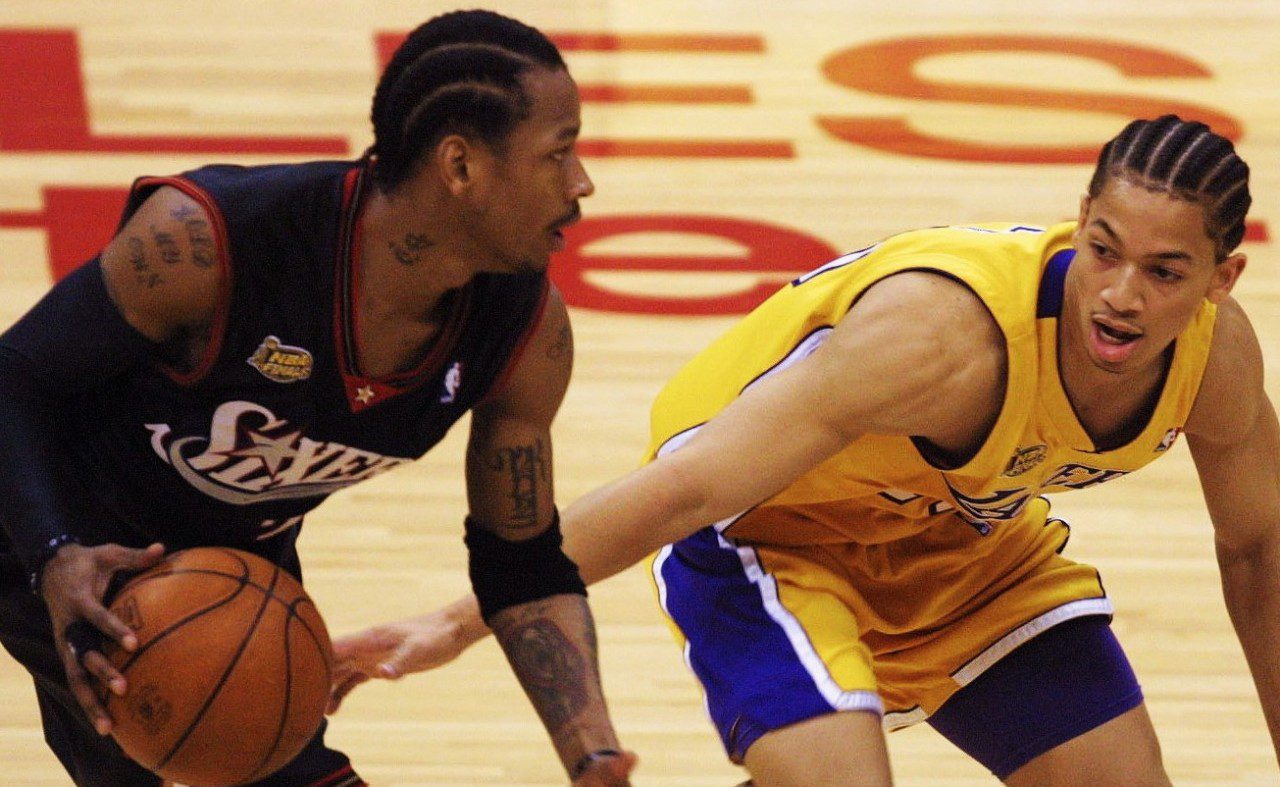
Will Andrew Wiggins be smiling as the overall number one pick on draft day? Image courtesy of BasketballElite/Flickr.
Coming into the 2013-14 NCAA men’s basketball season, Kansas freshman Andrew Wiggins was considered to be the prize of the 2014 NBA Draft. He was regarded by some as a once-in-a-decade talent, capable of catapulting any team fortunate enough to draft him to instant prominence. This had been such a widely regarded concept that many teams are “getting younger” (i.e. tanking) in an attempt to position themselves to have a significant pick in the 2014 NBA Draft.
Unfortunately for Wiggins, and the teams that have been tanking to acquire him, he has had kind of a slow start to his collegiate career, calling into question his potential as the prize of the draft. The main problem with Wiggins is he has been billed as an elite offensive talent, but his offensive production has been marginal at best.
One of the main issues with Wiggins is that he is currently facing significant struggles with his shooting through 14 games, with a slash line of 43/30/78 (field goals, threes, and free throws), which would terrify me if I were drafting him to be an offensive fixture for my team. I’m certainly willing to be open-minded about his potential based on his athletic frame, but as the sample size grows so do my doubts.
Additionally, he’s only scoring 19 points per 40 minutes. I’ve always subscribed to the theory that, to project a player’s ability to be a high-scoring pro player, he has to reach a 20 points per 40 minutes average. The 20/40 average is significant as it shows a player’s ability to handle a high-volume role on a team and produce.
Along with my concerns with Wiggins’ ability to be a high-volume scorer, I also am worried about his ability as a playmaker. The 20/40 thing is scary, but I’d be willing to let it slide if he were handling a huge offensive load and making his teammates better. He’s currently only carrying a 24 in usage percentage, which is fine but not significant in any measure. However, it’s his paltry 1.4 assists per game (only 8.4 percent of teammate field goals have been assisted by Wiggins) that are as red-flag-able as you can get for a guy who some considered to be the “Next LeBron.”
All is not lost, though. Wiggins has some pretty solid defensive numbers that help justify his mythical athletic ability and help keep him in the realm of “tantalizing prospect.” His 5.4 rebounds per game are solid for a wing but he’s getting impressive defensive metrics with steal and block percentages of 2 and 3.3. Steals and blocks are important because they show a physical dominance over his competition.
Ultimately, Wiggins still has the potential to be considered an intriguing prospect for the NBA and even one that should go in the top five. He has an epic mix of length, athleticism and coordination and plays a very smooth brand of basketball, which is exactly what I like to see out of a wing player. He does have the kind of upside you are looking for, but he’s not the clear cut No. 1 overall pick.
The Competition:
Joel Embiid—C, Kansas:
Wiggins’ teammate is personally my favorite prospect in the 2014 NBA Draft. I have very little doubts with Embiid’s ability as long as he can stop fouling. Embiid is getting an epic 11.7 block percentage, 2.5 steal percentage, and even 12 assist percentage (remember Wiggins and his 8% percent? And Embiid is a center …). But it’s his 6.6 fouls per game that are the most (and only) concerning element to Embiid’s play. His per-40 numbers are mythic, but his fouls limit him to only 21 minutes per game. That being said, he’s without a doubt the safest pick out of the top five.
Jabari Parker—F, Duke:
Parker is a lot like Wiggins in that he was a heavily hyped scorer coming out of college, but the difference is he has been able to score a lot more efficiently through 15 games. He has a 55 true shooting percentage and a 58 effective field goal percentage on 33 percent usage rate, showing he has better been able to handle the heavy scoring load for his team than Wiggins. Concerns over position may exist, but he seems like a pretty obvious 4 in the new-age NBA and, in my opinion, should be selected ahead of Wiggins.
Marcus Smart—G, Oklahoma State:
Smart has maybe the craziest per-40 numbers out of anyone in the upcoming NBA Draft: 23 points, 6.6 rebounds, 5.5 assists, 3.6 steals and nearly 1 block. He has established himself as the best overall player country. The only major concern is what position he will play. Is he fast enough to be a point guard at the pro level? He seems like an ideal shooting guard, but his pedestrian three-point percentage will be a road block until he can figure that out.
Two Sleepers:
Jordan Adams—G, UCLA:
There is no good reason Jordan Adams is not considered one of the best prospects in the 2014 NBA Draft. His per-40 numbers are off the charts: 25 points, 6.8 rebounds, 3.5 assists, 4.7 steals—putting him in the Marcus Smart camp as an excellent overall player. He even has great all-around shooting percentages as well (50 percent from the field and 38 from deep). I can’t explain it, he will likely go outside of the lottery and be an absolute steal for some lucky team.
Spencer DinWiddie—G, Colorado:
Very little has been written about DinWiddie but he is another guy who has the chance to be a mid-to-late first-round pick that is capable of making a big impact on a playoff team. He’s got a very polished offensive game and might be the best overall defensive player in the entire draft. He’s not being mentioned as a top 10 pick, but I can’t justify more than 10 or so players going ahead of him.
Follow me on Twitter @JustinPinotti













